From buses to clean water to cheaper housing, Nevadans weigh in on how to spend billions in federal aid
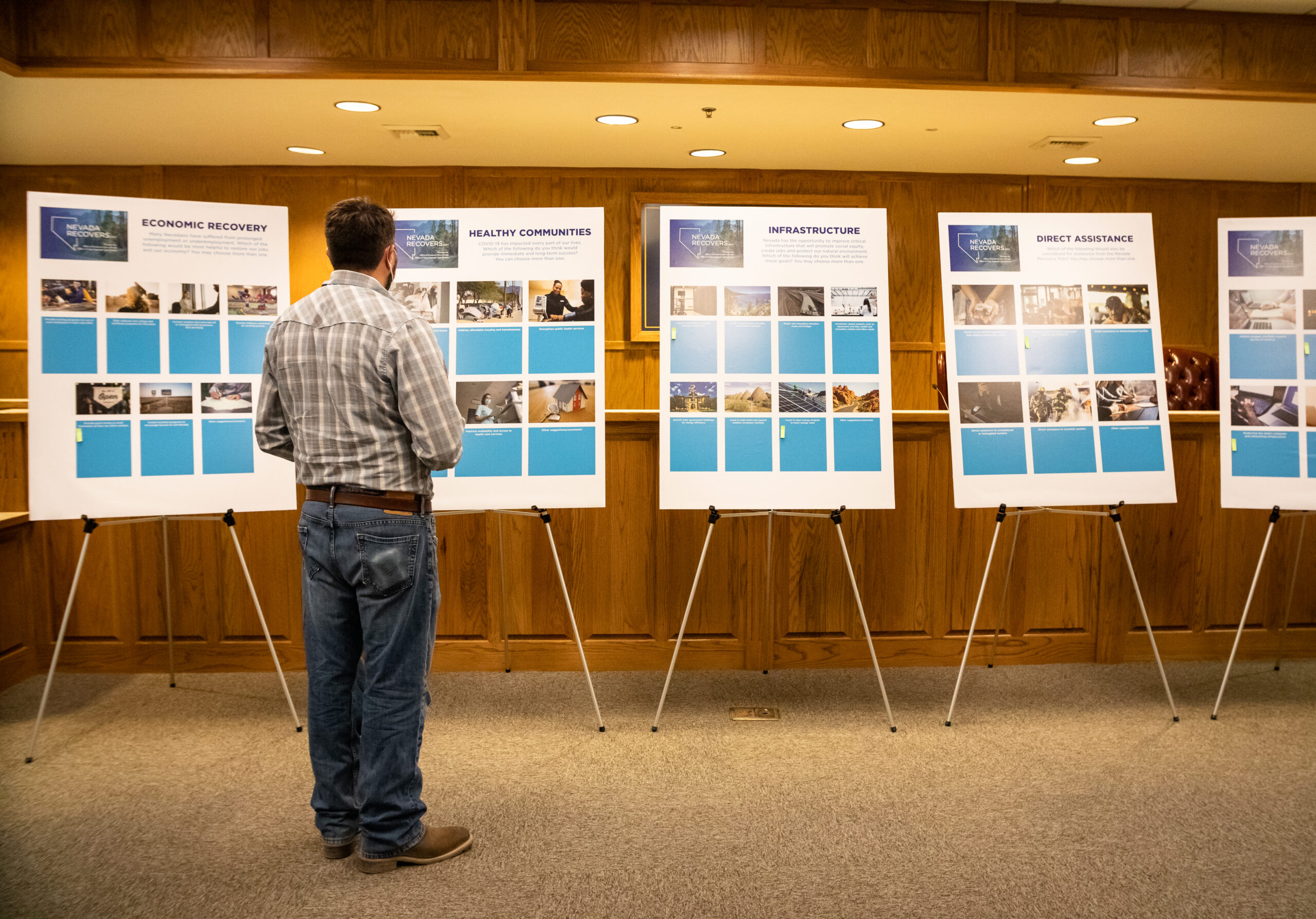
At a Clark County Commission special meeting in July, Trinh Dang, the executive director of Southern Nevada’s branch of the National Alliance on Mental Illness, made a simple request — could the county invest some of its share of funds from the American Rescue Plan (ARP) into expanded mental health services?
“We are understaffed, underfunded, but there is a huge need in our community,” Dang said. “Our system is just broken in general.”
During many weeks of meetings, Dang and hundreds of other Nevadans have told government officials about the ongoing aftershocks of the COVID-19 pandemic — the rise in youth suicide, the financial devastation that forced thousands out of their jobs and closed countless businesses and the exacerbation of the affordable housing crisis.
In meetings held from Las Vegas to Reno to Elko, residents and representatives of myriad nonprofits have discussed the significant damages caused by the pandemic and how the one-time windfall of federal aid dollars can best be spent to address long-term community needs, including affordable housing, public health and water and broadband infrastructure.
President Joe Biden signed the landmark, $1.9 trillion American Rescue Plan into law in March, delivering more than $6.7 billion in federal relief to Nevada (the state’s general fund biennial budget is roughly $8.7 billion). The majority of those federal funds ($1.1 billion in general aid for local governments and $2.7 in state general aid) can be spent with broad flexibility through the end of 2024.
Since July, officials have sought to gather feedback on spending those general aid dollars through surveys and community meetings, in accordance with the U.S. Treasury’s stated emphasis on public input, transparency and accountability.
But even with a lengthy timeline for spending, the pressure is on to garner responses now. While the state will collect ideas from the community through October, counties must submit broad spending plans to the U.S. Treasury by Aug. 31. Other local agencies, including school districts, must submit initial plans by early September.
The focus on public input marks a significant departure from the more top-down process for how previous coronavirus relief dollars were used by state leaders to respond to the challenges of the pandemic. That approach drew criticism from lawmakers, including questions about why the City of Las Vegas spent the majority of its relief funds to maintain city employee salaries.
“While it may be tempting to try and spend this money quickly, make headlines and get it out there, we have responsibility to make sure that this money is invested deliberately and intentionally, so that we can build a better lifestyle, a better Nevada for not just us but for generations to come,” Gov. Steve Sisolak said at an ARP-focused event in Las Vegas on Aug. 3.
In an interview with The Nevada Independent in late July, Clark County Commissioner Justin Jones said ARP funds can be used to address long-term needs because immediate needs were addressed using dollars from the Coronavirus Aid, Relief and Economic Security (CARES) Act, a federal relief package signed into law in March 2020 that brought more than $1.2 billion to the state government and sent other help directly to individuals and businesses.
“I think that we were able to use those CARES Act dollars wisely to address a lot of those immediate concerns,” Jones said. “So I do think we're more focused on sort of a longer term vision of how we address public health and infrastructure in our community.”
Some long-term priorities have already been decided. At an August meeting of the Legislature’s Interim Finance Committee, lawmakers appropriated roughly $700 million of the state’s ARP general aid — much of which was authorized by lawmakers earlier this year. But even with those funds allocated, state officials, legislators and local government officials still have roughly $3 billion in ARP funds to spend over the next several years.
From crowded county commission meetings to small, in-person events in rural communities, here’s how Nevada leaders are eliciting feedback on the state’s most pressing needs.
Community feedback
In Southern Nevada, the Clark County commissioners started the process early. They held a series of “community workshops” beginning on July 13, with meetings focused on hard-hit communities, affordable housing, small businesses, health and infrastructure. On top of that, commissioners held smaller town hall meetings within their own districts.
Jones, whose district encompasses portions of Enterprise, Paradise, Spring Valley and Winchester west of Interstate-15, as well as rural areas in the southwest part of the county, noted the new focus on gathering feedback before spending.
“The ARPA legislation really encouraged the local governments, state governments to get public input on how the dollars should be spent, whereas CARES Act was more prescriptive in terms of how it could be used,” Jones said. “The county just wanted to be on the front end, soliciting information from the public.”
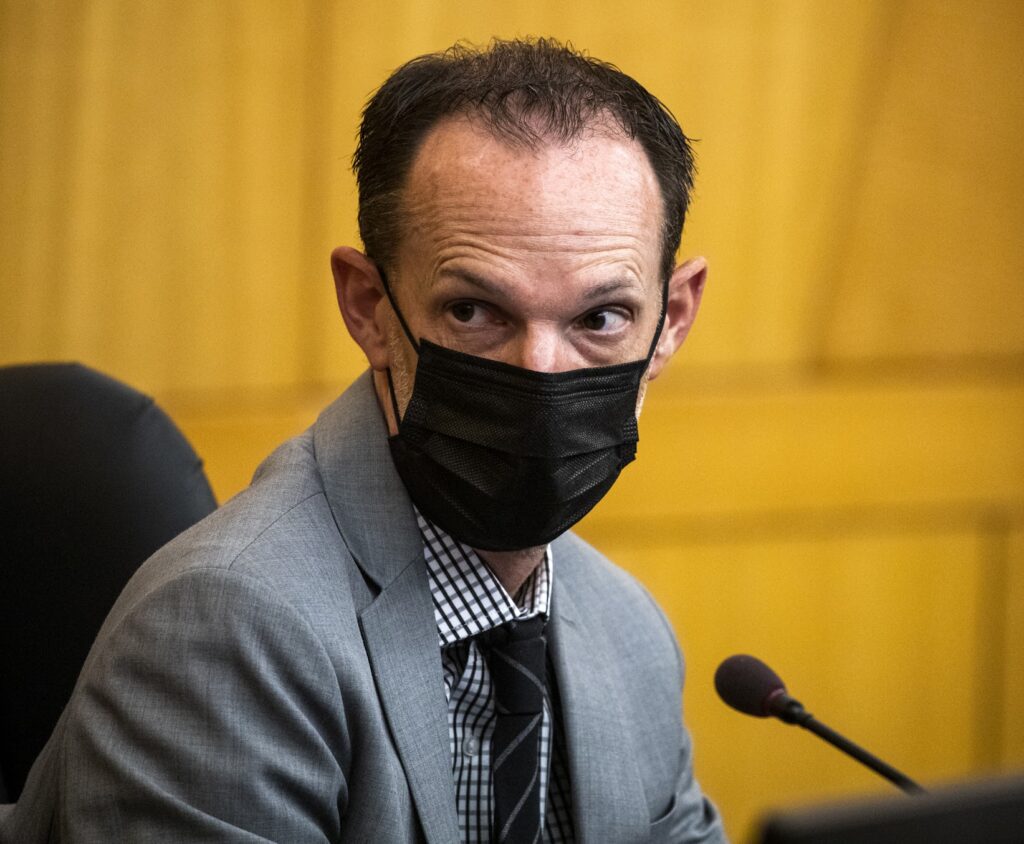
So far, Clark County commissioners have heard a laundry list of spending ideas, primarily from nonprofits.
Fuilala Riley, president of HELP of Southern Nevada, a social services agency that helps people gain housing access, urged the commissioners to spend funds on affordable housing.
“Preserve the affordable housing units we currently have at all costs,” Riley said at a July meeting. “Please create more affordable housing units, increase subsidized housing programs, and then continue and create programs that keep people housed, like rental and utility assistance.”
At another workshop less than a week later, similar groups asked for public health funding.
Andrew Sierra, an organizing manager for the Nevada Conservation League, said improvements to air quality would help combat climate change and address health issues prevalent in minority communities.
“This poses a significant health [risk] towards low-income and Black and brown communities, especially considering that they are the ones who suffer the brunt of the climate crisis,” Sierra said.
Even as those ideas continue to roll in, the level of community engagement has ranged from robust to minimal at Clark County’s meetings.
While scores of people attended the community workshops at the county’s government center in Las Vegas, other meetings led by individual commissioners drew much smaller crowds of fewer than 10 people.
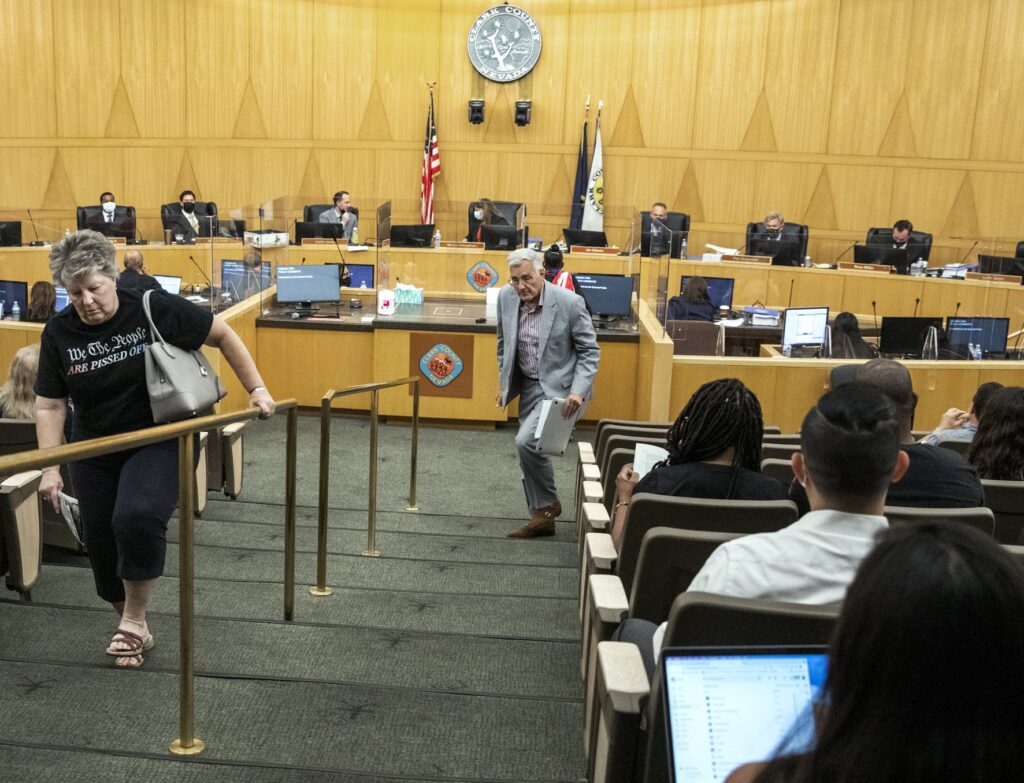
In other parts of the state, ideas and input on spending decisions have rolled in even more slowly.
On July 20, the Washoe County commissioners accepted the county’s roughly $92 million share of ARP funds — local governments must accept their share of funds from the federal government before allocating them.
County-level conversations in Washoe County about the funds did not officially start until a commission meeting in mid-August, nearly a month after Clark County started its process.
Though most of the meeting’s public comments were from Washoe County residents upset with the pandemic-related mask mandate — a common occurrence throughout ARP meetings — several attendees said they would like to see ARP funds allocated toward affordable housing and wraparound services meant to help youth and families that might include mental health treatment and case management.
“Making sure that we take a look at more affordable housing, that's extremely important here within Washoe County, especially with the growth that we're experiencing,” Benjamin Challinor Mendez, who serves as policy director for the social justice nonprofit Faith in Action Nevada, said during the meeting.
State listening tour
While counties gather feedback on pots of federal relief funds ranging from less than $1 million in Eureka County to more than $440 million in Clark County, the state has taken a broader approach to gathering ideas on its more than $2 billion in general aid.
The state kicked off its community efforts in early August with the “Nevada Recovers Listening Tour,” featuring Sisolak and Treasurer Zach Conine. The tour consists of 75 meetings over the course of 75 days.
During the first few weeks of the tour, Conine has presented information to county and city officials, from the Pershing County Commission to the North Las Vegas City Council, and has met with a variety of community groups, including business owners in Reno, farmers in Fallon and members of the Walker River Paiute Tribe in Schurz.
At a state-hosted event at the Yerington Food Pantry on Aug. 13, Conine asked a group of about 15 local residents how they want to see federal relief funds spent.
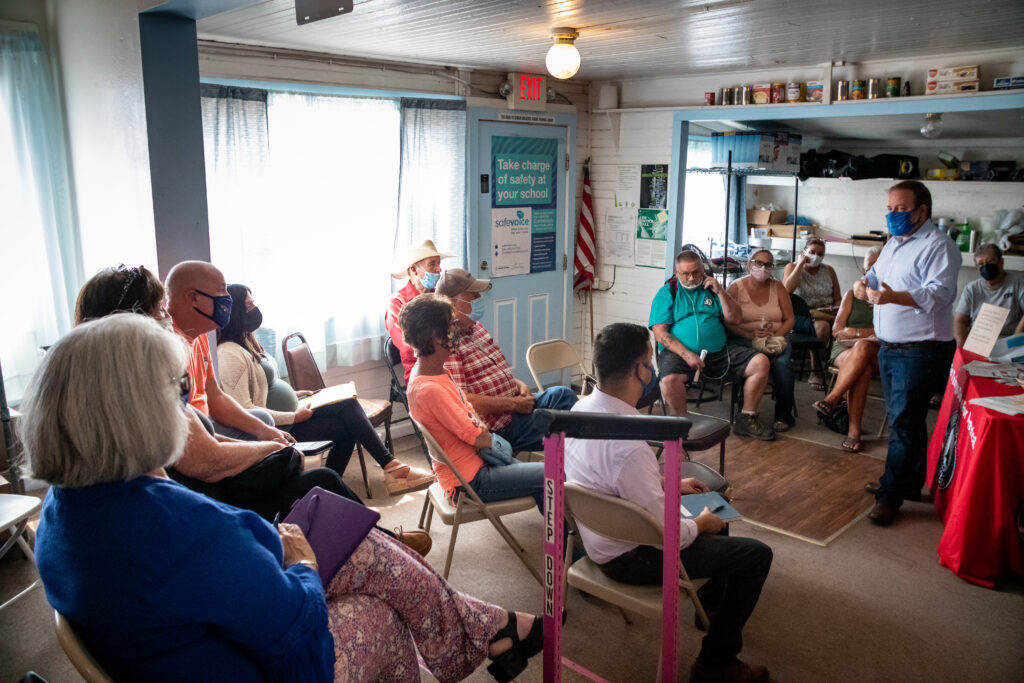
Gathered in a small circle around Conine, some people said they thought enhanced employment benefits were leading to worker shortages. Others, including 77-year-old Troyanne Cada of Silver Springs, said the county lacked affordable housing and child care options. A few attendees said students need more social support at schools.
“We need a lot of housing for these homeless people,” Cada said. “We need some reasonable rental homes for the people that, you know, they want to rent and can't afford to buy.”
After one woman said that every school should have a social worker, 75-year-old Jerry Harris of Yerington shared the story of her grandson who was abused.
“I'd like to see somebody professional there because he said, ‘I couldn't talk to my teacher because I didn't want to go to foster care, grandma,’” Harris said. “These little kids are our future. They need help.”
John Fullenwider, a minister who lives in Yerington, told The Nevada Independent after the meeting that he hopes to see ARP funds invested in water infrastructure. The residents of the city have been dealing with the effects of groundwater pollution from a nearby copper mine over the past several years.
“I’m hoping some of the money will be allocated to water to clean up some of our water waste,” Fullenwider said. “People are drinking poisonous water, and it’s not good.”
In other rural communities, residents are also hoping for some funds to be allocated towards water infrastructure. On the state’s listening tour, Conine met with farmers at Lattin Farms in Fallon, where attendees discussed how to better use water for food production, The Fallon Post reported.
The City of Fernley in rural Lyon County has already put those ideas into its ARP spending plans. The city’s plans — shared at a city council meeting on Aug. 4 — dedicate $8 million in ARP funds to support capital projects that improve the city’s wastewater infrastructure.

Other sources of input
While many county and state meetings have been used to gauge public opinion and gather ideas, some ARP meetings have focused on more particular groups of Nevadans, such as students in Clark County or Latinos residing in Reno.
At a Clark County School District (CCSD) town hall meeting on Aug. 18, student panelists discussed the difficulties they faced while learning online last year and offered advice for the best uses of ARP funding. Chief among them: mental health services.
One student suggested a dedicated mental health week at school, while another said it would be helpful to have more non-academic extracurricular activities that could help students form social connections and provide a mental break from school.
Students from Global Community High School, which serves students who are new to the country, also requested transportation funding, as CCSD currently does not provide transportation to the school, which forces some students to take Regional Transportation Commission buses each day. District officials have said they’re working on transportation solutions for students and have promised buses will be provided when Global’s new school opens next year.
At a roundtable event in Reno on Aug. 24, Latinos called on the state to distribute the federal funds to help small local businesses, create more affordable housing, increase access to interpretation services and invest in local infrastructure by adding more crosswalks, streetlights and parks to low-income areas.
“In order for the economy to succeed, we need to invest in small business,” Jose Velasquez, who owns A Toda Madre tattoo shop, said in Spanish during an interview with Luis Latino from KTVN. “Small business is like the train that needs to keep going, because at the end of the day, large corporations have millions of dollars but small businesses are hurt.”
State and local governments also have gathered a vast amount of input online.
Through a statewide website that received hundreds of submissions through early August, people have taken a survey to share their thoughts on how the ARP funds should be spent. Clark County also has a survey for spending ideas, which already has garnered more than 3,200 responses.
Different plans for spending
As community meetings continue across the state, counties and other local governments are on their own paths to developing plans for allocating their share of ARP funds.
Carson City and Fernley, the most populous city in rural Lyon County, each have developed plans for spending that involve directing a large chunk of their ARP funds to combating the COVID-19 pandemic, including Fernley’s plans for a community response center that will be used for COVID-19 testing and vaccine distribution.
In populous, urban Clark County, the county’s initial plans — assembled by local government consulting firm Management Partners and presented at a county meeting on Aug. 17 — blend different approaches by seeking to address both short- and long-term needs.
Meanwhile, the state has mostly relied on a long-term approach in developing its plans. In mid-July, the governor’s office entered into a contract with Las Vegas-based consulting firm Purdue Marion, valued at roughly $763,000. Details from the contract reveal plans for state leaders to give 70 presentations to elected officials and boards across the state, as well plans for 44 other community events, including events specifically created for Hispanic and other minority communities. The contract calls for the firm to plan and promote those events, including four months of radio and television advertising.
“More money has come into the state through the American Rescue Plan, the bills that preceded it and potentially the bills that follow it than has ever flown into the state at one time,” Conine told the Washoe County Commission in August. “And that gives us a chance to fix some of these long-term systemic issues.”
Reconciling the different approaches
As city and county governments develop their own spending plans, state officials are also concerned that the many different pots of ARP funding may lead to a duplication of efforts.
Conine emphasized that the process for figuring out how to spend the federal relief dollars is complex, with more than 100 different streams of funding coming into Nevada from the American Rescue Plan and the possibility for billions more in federal dollars to come to the state from other federal spending bills.
“This is about collecting all of the need, resourcing that need — so it's not just an idea, but a plan — and then being ready for it when future dollars come,” Conine said.
Local governments and agencies also are working on different timelines. Counties must submit an interim report — that includes broad spending ideas by category — to the U.S. Treasury by Aug. 31. School districts must submit expenditure plans by Sept. 10.
The state has more flexibility, with funds spread across different accounts, including a holding account within the governor’s office and the state general fund.
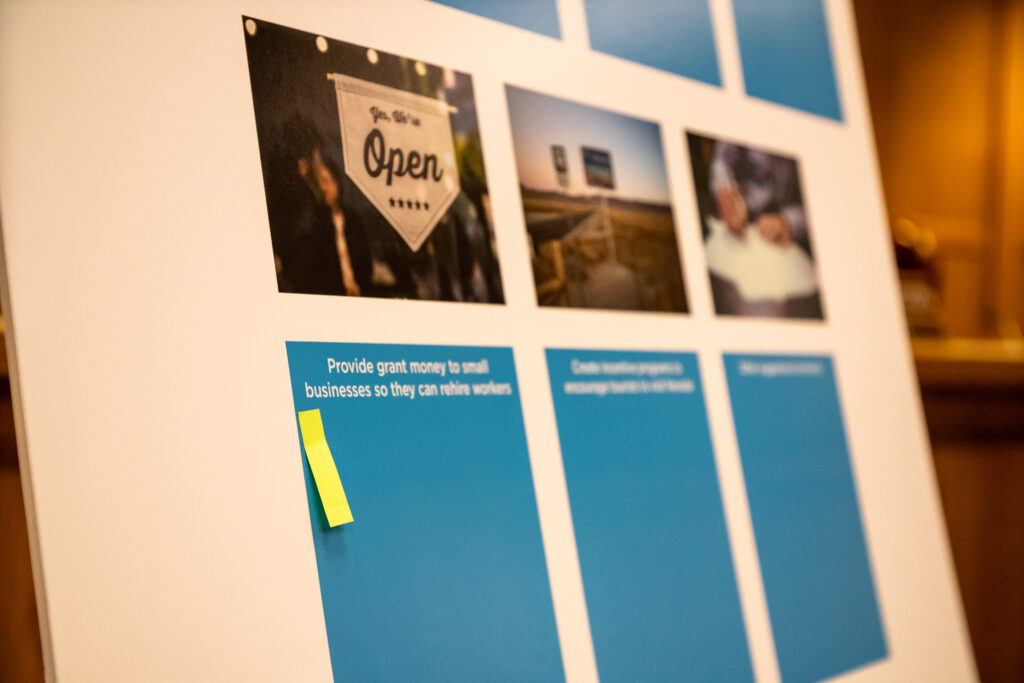
Synthesizing the ideas
Even with roughly a quarter of the state’s general aid already allocated, Conine said the state’s listening tour is playing a vital role in how the state will spend billions of dollars over the coming years.
“[We] wanted informed spending priorities, not just because that's the direction from the White House and the language in the Treasury guidance, but because we want to make sure that communities who have been hit hardest have the option to figure out how to spend this money,” Conine said at the Washoe County meeting.
Meanwhile, Clark County’s consultants have already presented the county with the culmination of weeks of feedback.
Synthesizing all of the information — from county workshops, commissioner town halls, thousands of survey responses and hundreds of preliminary applications for expenditures — Management Partners developed a plan consisting of roughly four pages of recommendations and prioritizes affordable housing, public health, support for local businesses and services for children.
The firm’s guidance includes recommended allocations for a wide range of categories, including $90 million for public health and $2 million for infrastructure. But the plan remains a broad overview — those recommendations do not yet break down further into specific expenditures for government projects and services.
Purdue Marion’s contract calls for a similar plan that can be narrowed to a list of specific spending ideas, and Conine has said multiple times that all ideas the state receives will eventually be released publicly.
“At the end of that process, through the help of the Legislature, we end up with one plan for housing statewide — obviously, there'll be different components that are geographic — one plan for economic development, one plan for increasing mental and behavioral health services, one plan for et cetera,” Conine said at the Washoe County meeting.
As Nevadans continue to reiterate similar priorities for spending — affordable housing, public health, the economic recovery and water infrastructure — Conine and other state leaders are maintaining an open invitation for feedback.
“Our suggestion to everyone, to Nevadans watching, is tell us what you need, tell us how you would fix it,” Conine said.
Tim Lenard, Jackie Valley and Jazmin Orozco Rodriguez contributed to this story.
